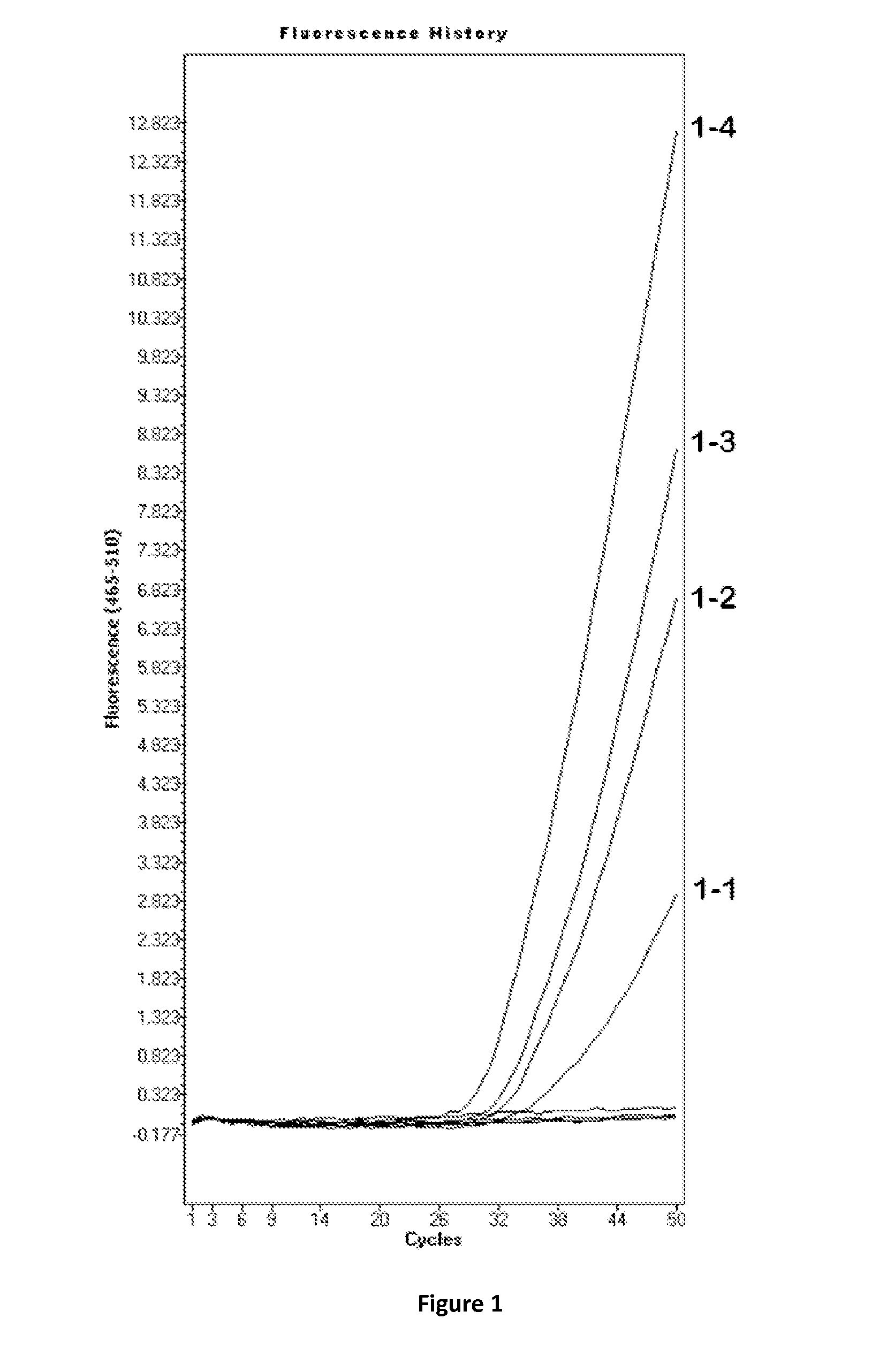Method and materials to deplete impurities for extraction and purification of nucleic acids from stool
a technology of nucleic acids and impurities, applied in the field of assays, can solve the problems of not being able to completely remove, not being able to fully purify dna from stool, and posting challenges to enzymatic-based analysis, etc., and achieve the effect of reducing the amount of impurities in a nucleic acid preparation
- Summary
- Abstract
- Description
- Claims
- Application Information
AI Technical Summary
Benefits of technology
Problems solved by technology
Method used
Image
Examples
example 1
[0039]Stool sample is collected from a male adult volunteer. About 15 grams of stool sample is placed in a tube containing 30 mL of preservation buffer developed by GLC Biotechnology, Inc. After homogenization, 20 mL portion of homogenized stool is mixed 1:1 with stool treatment and hybridization buffer A, which contains 5M guanidine thiocyanate, 100 mM sodium acetate, 200 mM potassium acetate, 100 mM Tris, and pH is adjusted to about 8.5. After thorough mixing, the mixtures are incubated under room temperature for 2 hours before being centrifuged at 10800×g for 20 minutes. After centrifugation, supernatants are aliquoted into 4 mL portions (equivalent to 1 gram of stool each) for DNA extraction.
[0040]Four different conditions were tested. Condition 1: no bovine serum albumin (BSA) was added to a supernatant aliquot created above. Condition 2: the concentrated bovine serum albumin (BSA) solution was added to the second supernatant aliquot with a final BSA concentration of 1 milligra...
PUM
| Property | Measurement | Unit |
|---|---|---|
| concentration | aaaaa | aaaaa |
| concentration | aaaaa | aaaaa |
| concentration | aaaaa | aaaaa |
Abstract
Description
Claims
Application Information
 Login to View More
Login to View More - R&D
- Intellectual Property
- Life Sciences
- Materials
- Tech Scout
- Unparalleled Data Quality
- Higher Quality Content
- 60% Fewer Hallucinations
Browse by: Latest US Patents, China's latest patents, Technical Efficacy Thesaurus, Application Domain, Technology Topic, Popular Technical Reports.
© 2025 PatSnap. All rights reserved.Legal|Privacy policy|Modern Slavery Act Transparency Statement|Sitemap|About US| Contact US: help@patsnap.com

